When we first got the new farm, it was nothing more than a large, open field without any trees or shrubs as far as the eye could see. A blank slate really. You can read more about it here.
So one of the first things we did was to plant hundreds of trees and a series of hedges and hedgerows throughout the property to help create a sense of place and permanence and encourage more wildlife to make the farm their home.
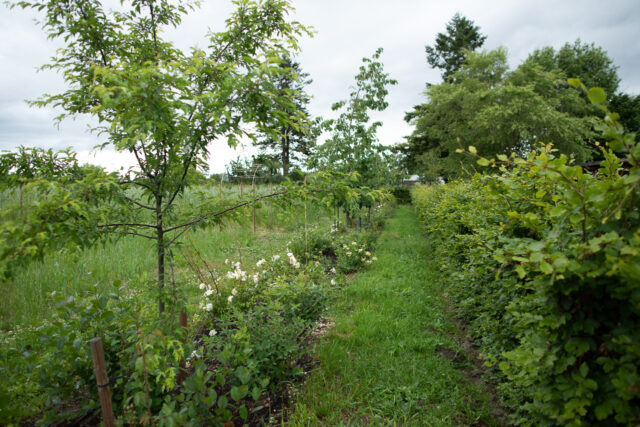
These plantings have many benefits, but some of the most important are that they help slow down harsh winds, prevent erosion and damage to field crops, provide a nectar source for pollinators, and food and shelter for songbirds.
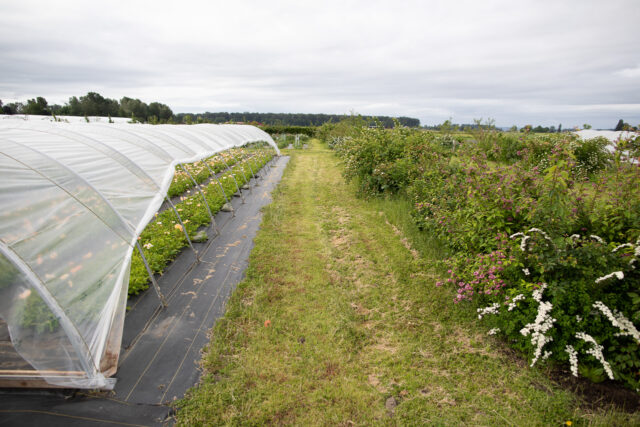
I prefer to use hedges to mark the boundaries of a garden area or as a backdrop for a decorative planting, and I like using hedgerows in places where they have room to spread out, such as along a roadway or field edge.
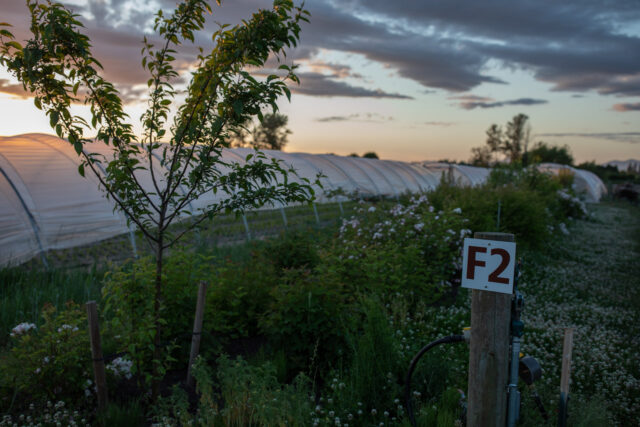
When we started looking for information about designing hedgerows, there weren’t a lot of examples available that used non-native plants. While native hedgerow plantings are amazing, I wanted to experiment with using ornamental shrubs and small trees to see if we could get the same benefits of a traditional hedgerow, with the addition of more beauty.
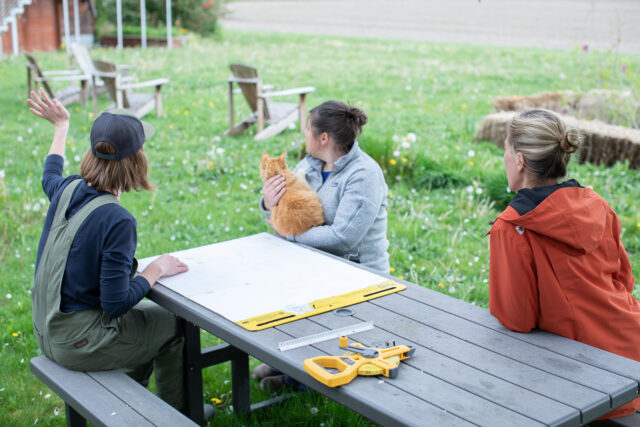
While we used many different types of plants, in order to simplify the design process and test out which ones performed best, we decided to use the same plant spacing for each hedgerow combination so that we could test out which ones performed the best.
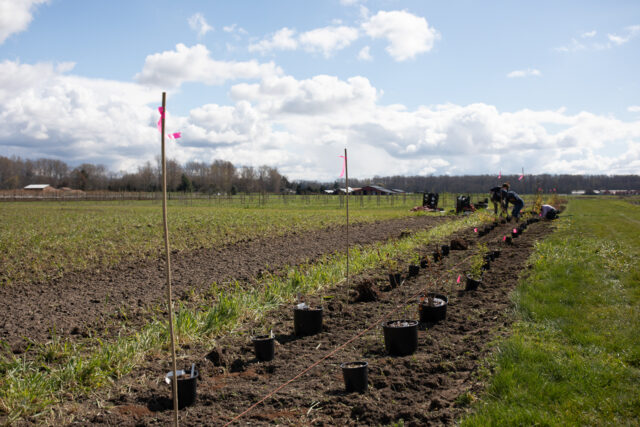
Each planting bed measured 6 ft wide and 80 ft long and consisted of two rows of plants spaced roughly 3 ft apart, off-center. Individual plants within each of the rows were also spaced 3 ft apart.
The reason we used such close plant spacing was because we wanted the hedgerows to fill in quickly.
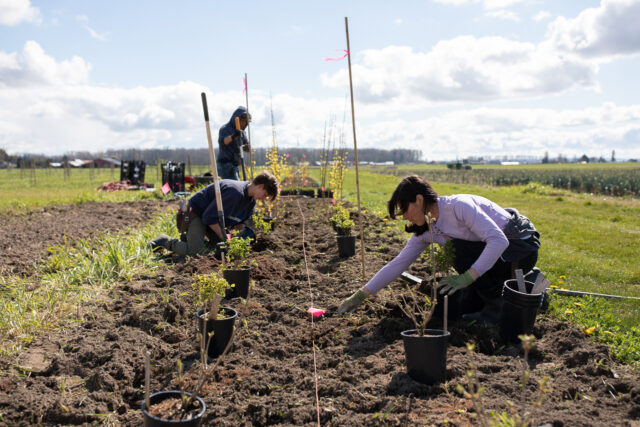
After the plants went into the ground we mulched all of the bare dirt with a layer of cardboard and compost to help suppress weeds and feed the plants. Drip irrigation was then installed and run twice weekly from May through September.
The taller trees were staked for the first 2 years to help their roots take hold more quickly and keep them from blowing over in heavy winds.
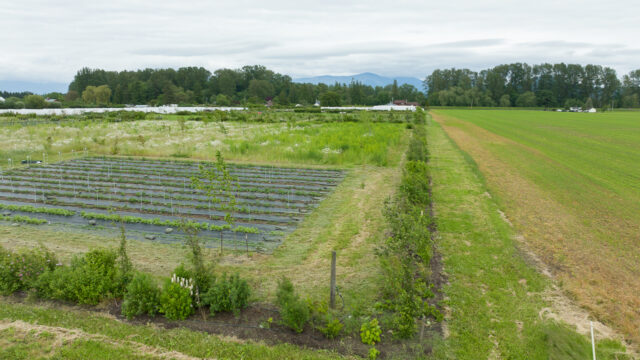
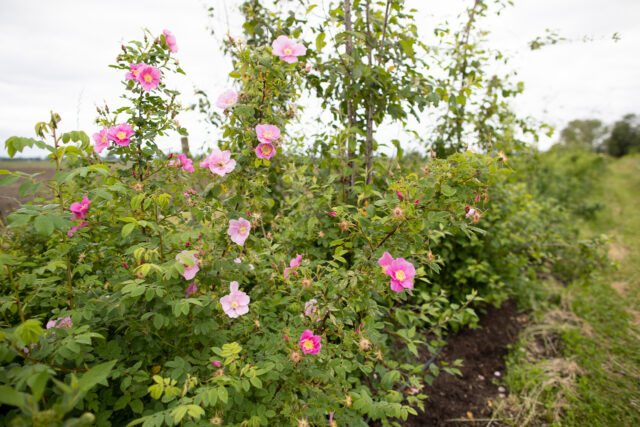
So far this planting has done remarkably well and in just two growing seasons, large swaths of it are already filled in.
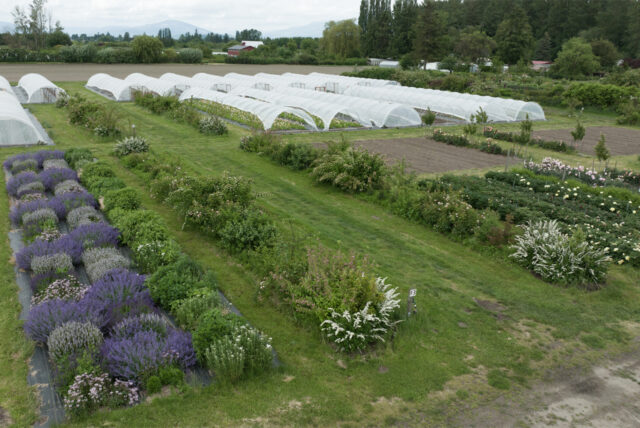
At the bottom of this post, you can find a printable list of all my favorites!
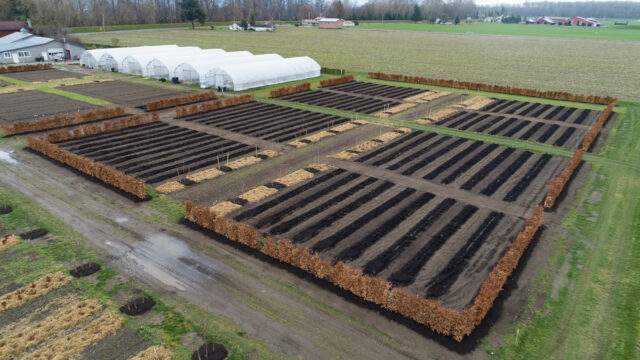
We worked with a wonderful company called Instant Hedge that specializes in this type of hedging and their innovative packaging allows the hedges to be transplanted any time of the year without experiencing transplant shock. I was quite skeptical when we first discovered them, but Becky kept reassuring me that this type of hedging was commonly available in England and I’ve been so impressed with how quickly they’ve established.
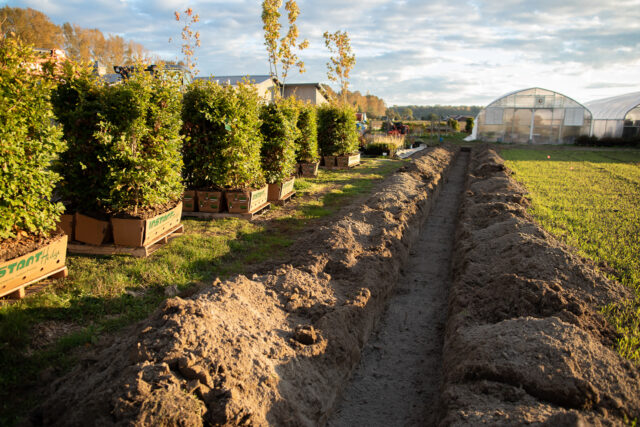
One of the things I love about the beech hedge is that if you keep it trimmed under 6 ft in height, the plants will hold their dead leaves through the winter, which creates the most beautiful brown hedges that sound like running water when the wind blows through them.
The downside to going this route is that it requires the use of a forklift for moving the heavy boxes of hedges and a backhoe for digging the trench, but if you have access to this type of heavy equipment, their hedges truly are “instant.”
Here’s a short video we made with them about our experience working with their company.
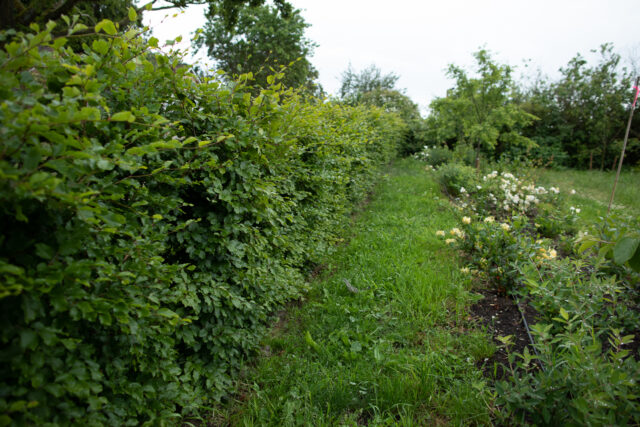
My hope was that I could identify the best varieties so that home gardeners might be inspired to consider adding a hedgerow to their garden. I also thought this approach would work well for flower farmers who are short on space but want to add more woodies into their operation.
Additionally, I wanted to see if this type of approach would work in a more traditional farm setting noting the yearly labor requirement and maintenance involved, plus the upfront investment needed for plants.
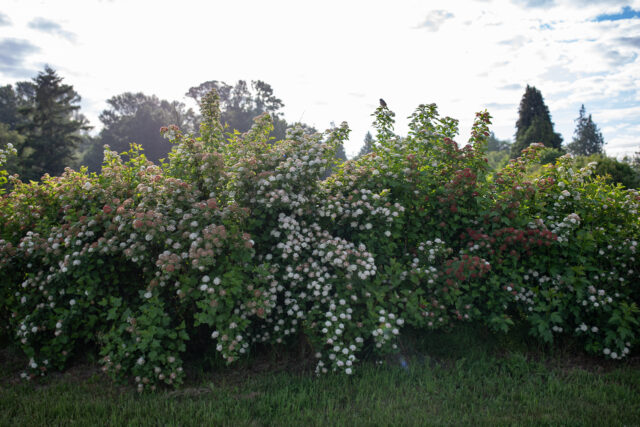
Overall, this project has exceeded my expectations and we’re only three growing seasons in. The number of songbirds and new wildlife we’ve seen on the farm since planting these has been incredible and I’m excited to see who shows up next.
In addition to the beauty that the hedgerows offer when in full bloom, they are also humming with life all season long.
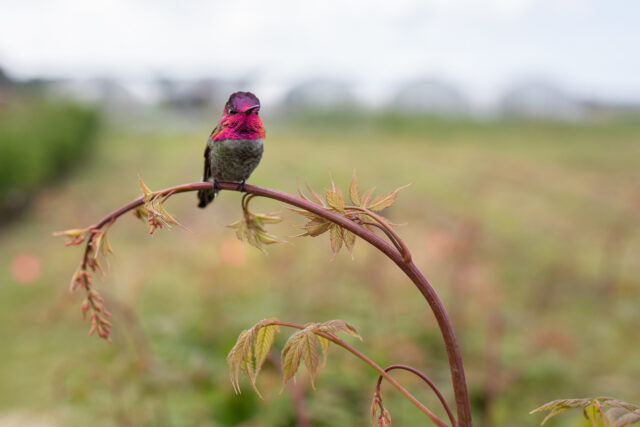
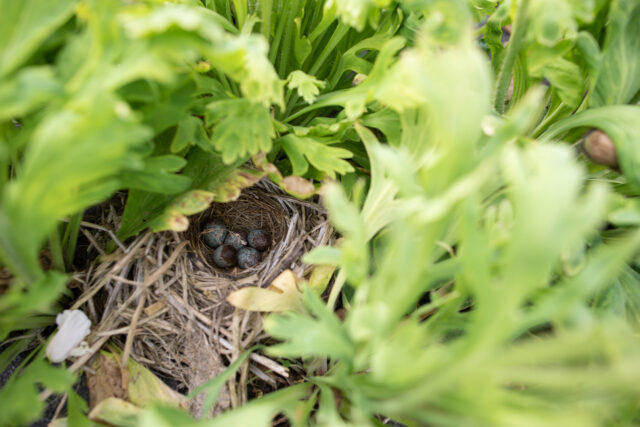
I would love to know if you have any experience growing hedgerows or if you have a favorite tree or shrub when it comes to attracting wildlife to your garden.
Please note: If your comment doesn’t show up right away, sit tight; we have a spam filter that requires us to approve comments before they are published.
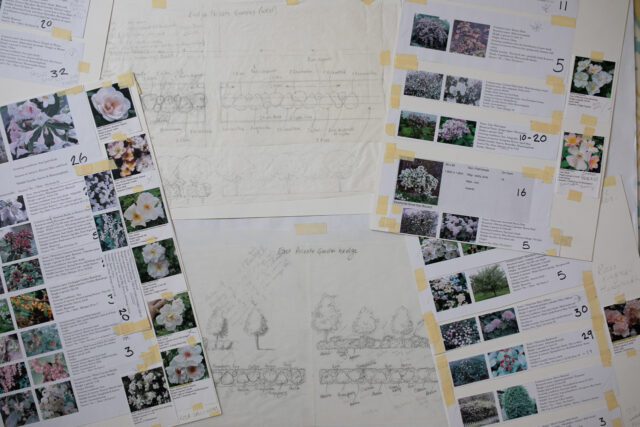
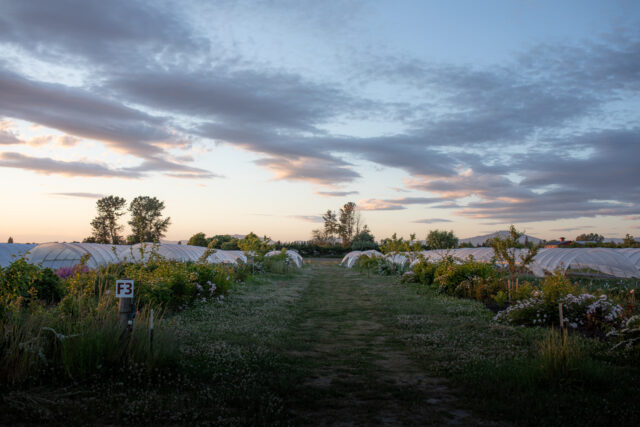
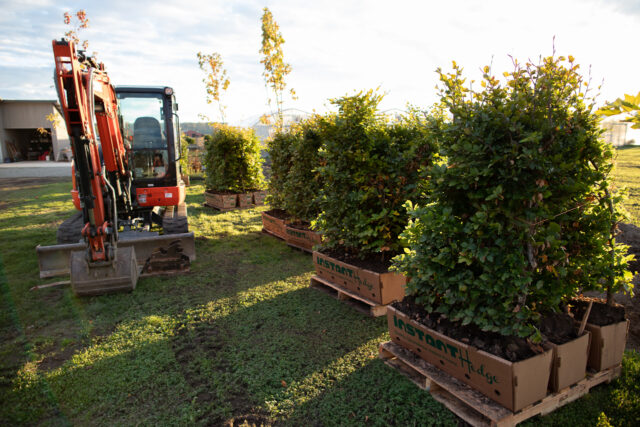

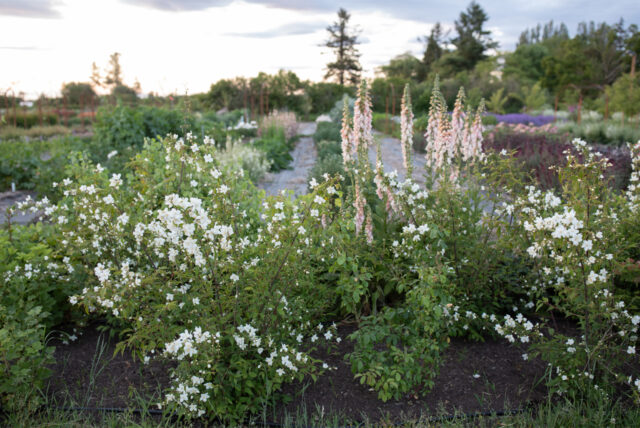
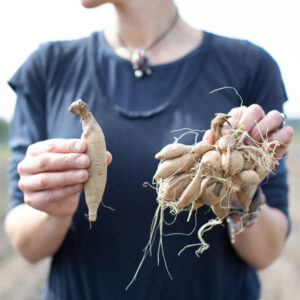

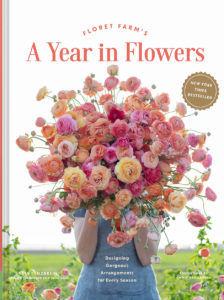
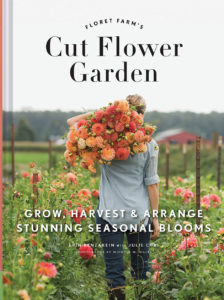


Talulah on
I found your piece on hedging and hedgerows very interesting. The favourite hedge I have planted so far is the Rugosa Rose, Agnes. Its is quite an early Spring blooming rose with abundant and beautifully fragrant pale amber yellow blooms. ‘Also have planted hedging rows of Eleagnus, Thuja, Portugese Laurel, upright Hornbeam, Poplar, English Beech and Viburnum and a mixed looser looking hedging of cherry Laurels, conifers, silver birch and Copper Beach – trying different varieties to see what suits our soil and conditions (zone 8, and windy).